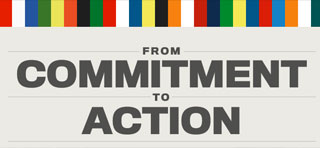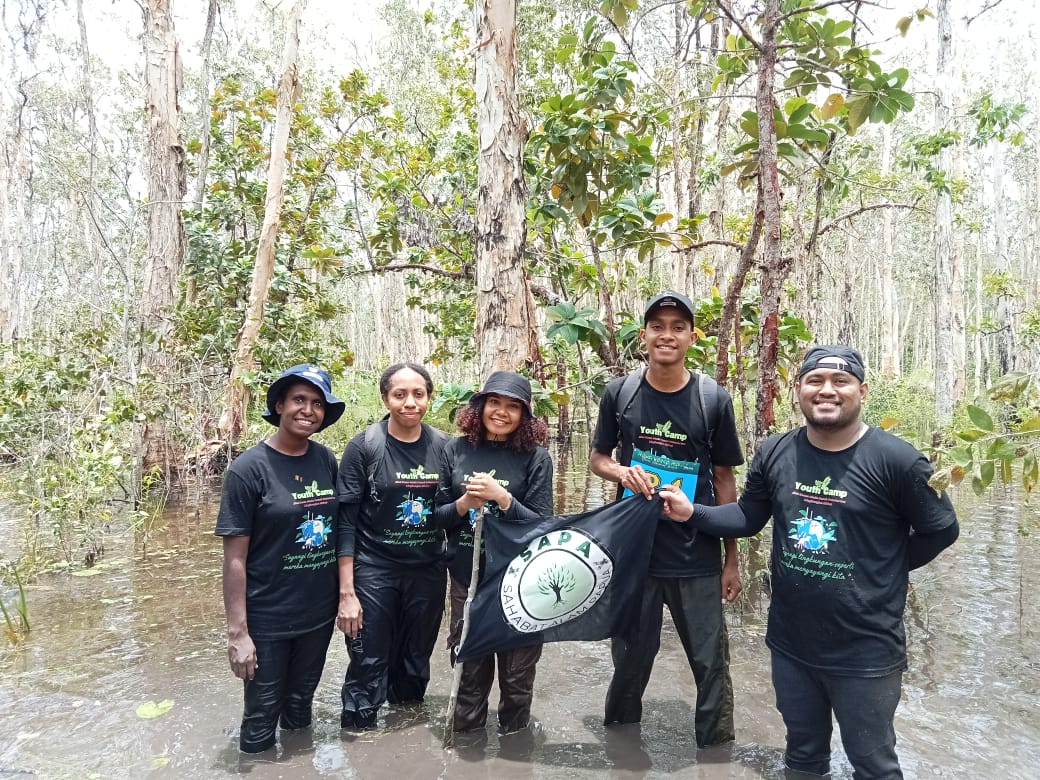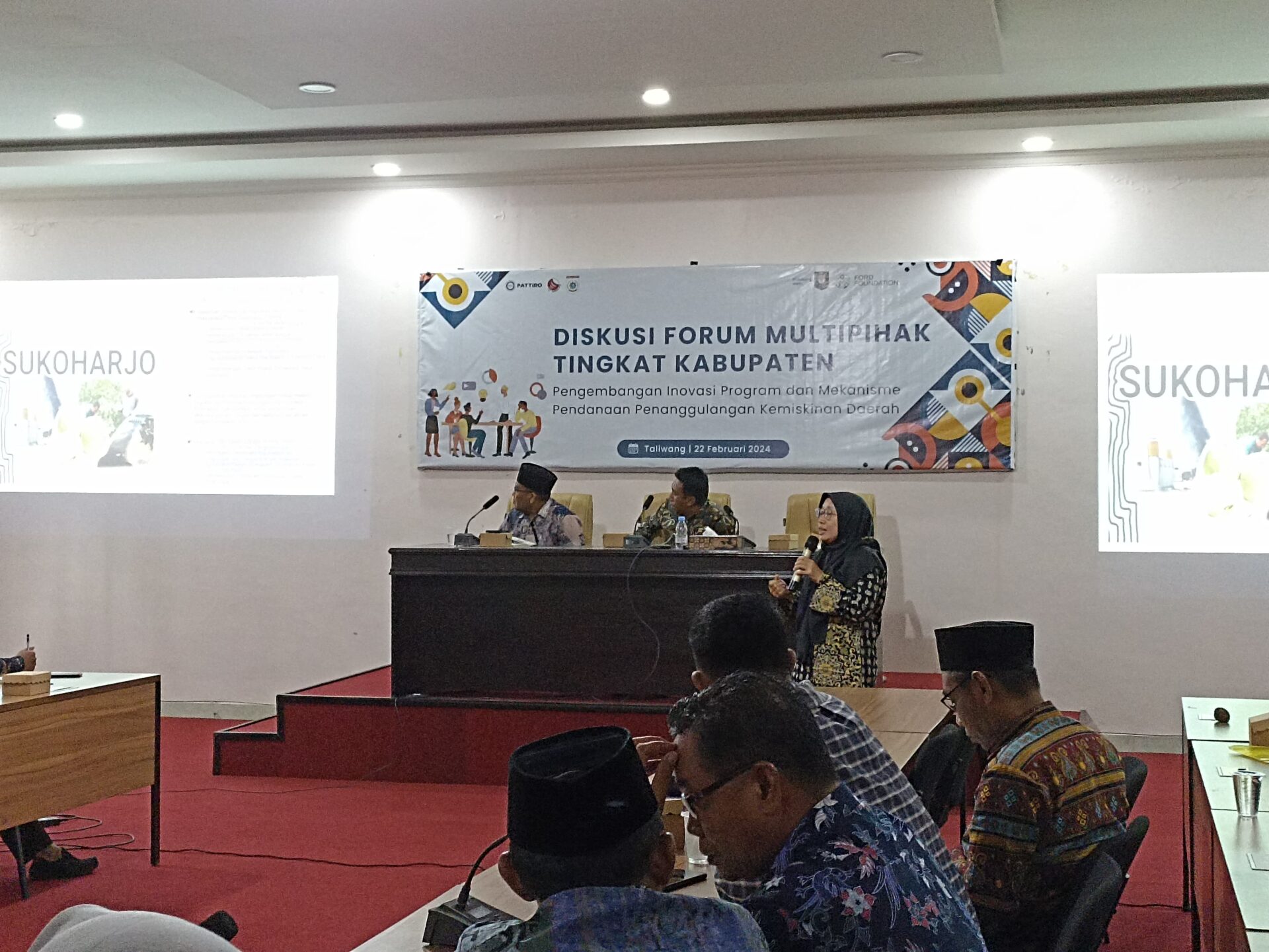 Obama’s victory received support extensive support within Silicon Valley. It is difficult to state that there is no strong connection between this support and the utilization of ICT in the “open government” doctrine of the Obama administration. ICT has been chosen as the primary media in building transparency and opening up participatory room.
Obama’s victory received support extensive support within Silicon Valley. It is difficult to state that there is no strong connection between this support and the utilization of ICT in the “open government” doctrine of the Obama administration. ICT has been chosen as the primary media in building transparency and opening up participatory room.
To assist an ICT-based open government initiative, President Obama has chosen Beth Simone Noveck as the Deputy CTO for Open Government in the White House. Previously, Noveck served as director for the Institute for Information Law and Policy at New York Law School. In this position, she founded the school’s Do Tank, a, law and software development research lab with a focus on tech invention and policy to promote open government. She was also included in the Foreign Policy magazine’s list of 100 Influential Global Thinkers. It can be said that Noveck is one of the main supporters of the Open Government Initiative within the Obama administration.
Like most American thinkers, Noveck has criticized deliberative democracy proposed in Habermasian thought. The argument follows, that deliberation that opens up a consensus space can solve the representative democracy’s failure for justice only at the input-level. Alternatively, by developing open government within a collaborative democracy scheme will bring it up to the level of effective decision making and output. Under the Obama administration, the Open Government Initiative has, thus, included collaboration as one of the core values. In support of the position of collaboration, Noveck has argued that:
Deliberation measures the quality of democracy on the basis of the procedural uniformity and equality of inputs. Collaboration shifts the focus to the effectiveness of decision making and outputs. Deliberation requires an agenda for orderly discussion. Collaboration requires breaking down a problem into component parts that can be parceled out and assigned to members of the public and officials.[1]
In order to realise ICT-based collaboration, what is known as “open government data” is required. This approach is believed to be important in helping the OGI to achieve its substantive purpose, that is, to strengthen democracy and create a more efficient and effective government.[2]
Open government data has replaced the transparency orientation that focused on political accountability on the policy-formulation level. This has fostered an effective and efficient spread into the service-provision level through multiple collaboration schemes. In order for this achievement, information had to be placed in the public domain. This framework required a machine-readable system to facilitate anyone to process and use available public data available. Hence, data provision in a simply static format (e.g. pdf version) is considered as not fulfilling the requirement.
The ideas behind this initiative by the Obama administration have now expanded to a global scale through the Open Government Partnership (OGP). Indonesia is one of eight countries who initiated the OGP and as an OGP member is expected to meet the minimum eligibility criteria in four key areas: fiscal transparency, information access, public officials’ wealth transparency, and citizen engagement. From November 2013, Indonesia was installed to the OGP leadership as lead-chair, replacing England, while Mexico took on the co-chair position.
However, Open Government is not without critics. It has been suggested that Open Data integration into the Open Government concept can only repair transparency in the public service area and not within the field of political accountability. This is considered as an uncertainty in the Open Government initiative by the Obama administration (Pexiato, 2012). [3] Open Government is also seen to increase risk for public agencies because the public perspective will tend to be negative as a result of the weaknesses exposed and successes ignored. In response to these potential failings, Archon Fung (2013) recommended an approach known as Targeted Transparency, referring to Open Government as Naked Government.[4]
Naked government may thus systematically reinforce negative perceptions of government. Simply put, the politics of accountability often associated with open government can amount to an Amazon five-star rating system in which government can only receive one or two stars.
Developing countries are believed to be facing several issues in implementing open government data initiatives: first, lack for consistency in supporting infrastructure; second, a discrepancy in the social capacity for technology utilization; and third, with poor security in the protection of personal data, implementing this scheme will potentially result in breaches of the privacy of citizens.
Another important question is this: who will benefit the most when open government data policy successfully shifts the Indonesian government’s data into public domain? Sceptics will suggest that further public infrastructure provision in some ways could also potentially worsen the social discrepancy.Past [T1] experiences have shown that Indonesia for decades has been massively dependant on foreign loans for public infrastructure development. This has had negative side effects, such as the domination of motor vehicles produced by foreign lenders in the national market. On the other side, the level of social discrepancy is not showing any significant reduction.This note does not, however, intend to dig deeper on that issue.
Co-Managed Country
On a global scale, there have been significant changes in political power and its stability within the nation state. These changes are what Jimly Asshiddiqie has called the rise of the new “Trias Politica” which is the State, Civil Society and the Market.[5] In the new format, there is strategic collaboration in public affairs, a field that had long been considered the responsibility of government. This writer will refer to this reconfiguration as co-management.
One of the signs of the global tendency towards this co-management is the existence of various state auxiliary bodies. On one hand, their existence is intended to streamline and accelerate the implementation of increasingly diverse public affairs in achieving the national objectives. On the other side, their existence reflects the cohesiveness between the three elements, being the society, market and state.
Society’s participation in government policy implementation can now be found from the strategic decision-making level right through to implementation. In England, this tendency has caused the formation of more than 350 state auxiliary bodies. In other countries that have a population significantly less than Indonesia, such as New Zealand, similar events are also increasing significantly.
In Indonesia, apart from serving as a collaboration forum for governance, the existence of state auxiliary bodies have also contributed to accelerating reconciliation in the post-reform era. However, naturally, the reformation process left behind quite a number of social groups that have represented the status quo and distrust within society. This situation continues to causeconflict that is counter-productive for good governance.
Lately, there have been efforts to evaluate the existence of state auxiliary bodies in Indonesia. However, the evaluation process has tended to ignore these bodies’ function and in several ways, it has started to get trapped in a negative campaign from the anti-reform powers.
The existence of state auxiliary bodies has become a form of social investment for the birth of collaborative democracy. This itself serves as a precondition for the development of a substantive open government. To this, the integration of ICT can then further this development.
Government 3.0: The State as a Platform
The digital world is becoming a significant influence in the transformation of social and political relations within the context of open government. The utilisation of terminology associated with the development of web technology, is a significant example of the influence of the digital world in shaping and understanding open governance.
Web 1.0 was the beginning of web pages using a static page utilizing the HTML tag. This technology was introduced in 1990 by Tim Berners-Lee and was the genesis of the World Wide Web. Web 1.0 only presents static information on each page, that is to say, in a read-only format.
The next generation was the Web 2.0 that is in popular use today. Users or visitors are not only reading information but can also interact with the web sites (read-write). This generation of web pages has fostered the development of the social media phenomenon. In the field of government the technology enabled the development of a platform that is called as Government 2.0. In the US, Noveck introduced what is called Wiki Government.
The most recent generation, Web 3.0, is marked by what is called a semantic web; this generation has an artificial intelligence. If in the 2.0 generation, the users can interact, in 3.0 generation, a website can read other websites just like users; this is supported by the existence of web service. Through version 3.0, applications embedded in each website is communicated to others, thus, disparity between platforms is eliminated. As an example, those who are using Google Drive can use that application to write a document or spreadsheet that is embedded in that site. The editing process can therefore be done collaboratively by more than one user.
The digital revolution has brought about significant changes to the state. These changes oftentimes have followed the symbolic steps as mentioned above, even if not completely. The transformation of the system of governance into open government can thus be understood by the steps above.
In the first step (Government 1.0), the government is running based on a separate decision-making process. Management of information regarding governance is done unilaterally and the public receives the end result without being able to influence it through more than just feedback. This is a static accountability form that was pervasive during the closed-regime period. Elementary progress from this phase can be found in the introduction of pooling methods or online complaint mechanism for governance.
The second phase or Government 2.0 is marked by the shifting role of the state to be more collaborative in decision making. Interaction between elements in the society (market and civil society) in decision-making forums becomes more interactive and enters the policy formulation phase through to the implementation phase. This is the sign of the second phase, “the state as a social media.” Post-reform era, this situation has begun to occur in multiple sectors in Indonesia but it is still largely artificial. The phase is marked by a social accountability system that is more dynamic.
The third phase or Government 3.0 is marked by platform integration of each decision-making sector into one big platform, the State. This generation is marked by the existence of applications that are connected with other applications within the state’s various institutions. If initially, relation is divided into three elements: the state, market and civil society, in this generation the state has become a big platform that is co-managed by two elements: the market and civil society. In the future, the state has not only shifted information and government data into public domain, but the state itself has entered the public domain.
The Ever-Expanding Openness…
Future progress is predicted to not stop with government. The transparency issue has already started to induce demand for an open private sector (open market). David Cameron (UK Prime Minister) in an OGP Summit 2013 plenary session stated: [6]
But this transparency needs to extend beyond the public sector and into the private sector, too. We need to know who really owns and controls our companies, not just who owns them legally, but who really benefits financially from their existence.
In his letter to the President of European Council regarding tax evasion and corporate secrecy, Cameron wrote: ‘After listening carefully to businesses, NGOs, technical experts and other groups, I announced two weeks ago that the UK’s central register of beneficial ownership will be open to the public’. [7]
Archon Fung (Co-Director of the Transparency Policy Project-The JFK School), in an interview with the Nextgov in 2009, also explained the importance of implementing transparency for corporations: [8]
We need to use the government as an agent to make the decisions and actions for all these large corporations in the economy–which are creating huge social risks that people don’t understand–more open. People need to understand what these corporations are doing and how to protect their interests and minimize their risks. Americans would be well-served by that broadening of transparency–not just governmental transparency, but transparency of society as well.
[1] Noveck, Beth Simone. The Single Point Of Failure, in Open Government Ch. 4, Creative Commons, California, 2013.Halp. 65.
[2] Refer to Obama’s statement on 21 Januari 2009: “My Administration is committed to creating an unprecedented level of openness in government. We will work together to ensure the public trust and establish a system of transparency, public participation, and collaboration. Openness will strengthen our democracy and promote efficiency and effectiveness in government.”
[3]Peixoto, Tiago. The Uncertain Relationship Between Open Data and Accountability: A Response to Yu and Robinson’s The New Ambiguity of “Open Government”. UCLA Law Review Discourse, 60 (2012)
[4] Fung, Archon. Infotopia: Unleashing the Democratic Power of Transparency. Politics & Society, 41, SAGE Publication, 2013, page: 189
[5]Refer to Jimly dalam in Membangun Pemerintahan yang Efektif, Bersih dan Efisien (http://www.jimly.com/), accessed on 11 December 2012.
[6] https://www.gov.uk/government/speeches/pm-speech-at-open-government-partnership-2013. Sat, 23 Nov 2013, 09:50.
[7] UK Prime Minister’s Letter on Tax Evasion and Corporate Secrecy, 14 November 2013.
[8]Nextgov second interview, 14 September 2009. Source: http://www.nextgov.com/technology-news/2009/09/the-risks-of-open-government/44780. Sat, 23 Nov 2013, 09:50.
Open Government Politics
Government 3.0: State as a Platform
Obama’s victory received supports from theextensive support within Silicon Valley. It is difficult to state that there is no strong connection between thissupports received and the chosen scheme ofutilization of ICT utilization in the “open government” doctrine in of the Obama administration. ICT has been chosen as the main primary media in building transparency and opening up participatory room.
To assist an ICT-based open government initiative, President Obama has chosen Beth Simone Noveck as the Deputy CTO for Open Government in tThe White House. Previously, Noveck served as is the director for the Institute for Information Law and Policy at New York Law School. She In this position, she founded the school’s Do Tank, it is a research lab, law and software development research lab with a focus on tech invention and policy to promote open government. She is was also included in the Foreign Policy magazine’s list of 100 Influential Global Thinkers. It can be said that Noveck is one of the main supporters of the Oopen Ggovernment Iinitiative under within the Obama administration.
Like most American thinkers, Noveck has criticized deliberative democracy proposed by thein Habermasian thought. The argument follows, that Ddeliberation that opens up a consensus space, will can solve the representative democracy’s failure for justice only at the input-level. Alternatively, by Ddeveloping open government withinin the a collaborative democracy scheme will bring it up to the level of an effective decision making and output. That is whyUnder the Obama administration, the Oopen Ggovernment Iinitiative under the Obama Administrationhas, thus, included collaboration as one of the core values. In support of the position of collaboration, Noveck statedhas argued that:
Deliberation measures the quality of democracy on the basis of the procedural uni‐formity and equality of inputs. Collaboration shifts the focus to the effectiveness of decision making and outputs. Deliberation requires an agenda for orderly discussion. Collaboration requires breaking down a problem into component parts that can be parceled out and assigned to members of the public and officials.[1]
In order to realiseICT-based collaboration, approached required what is known as “open government data” is required.” This approach is believed to be able to carry important in helping the OGI toin achieveing its substantivesubstantial purpose, which that is, to strengthen democracy and create a more efficient and effective government.[2]
Open government data has replaced the transparency orientation that initially focuseds on political accountability on the policy-formulation level. This has fostered an, to effective and efficient spread out up to the effective and efficient into the service-provision level through multiple collaboration schemes. For thatIn order for this achievement, information must had to be placed on in the public domain. This framework required a machine-readable system to facilitate anyone to process and use available public data available. Hence, data provision in a simply static format (e.g. pdf version) is considered as something that is not fulfilling the requirement.
Expansion motive from the actor of industrial sector that is supportingThe ideas behind this initiative by the Obama administration havehas now expanded to a global scale through the Open Government Partnership (OGP). Indonesia is one of eight countries who initiated the OGP and as an. OGP members isare expected to meet the minimum eligibility criteria in four key areas: fiscal transparency, information access, public officials’ wealth transparency, and citizen engagement. On From November 2013, Indonesia will be holding was installed to the OGP leadership as a lead-chair, replacing England, while Mexico will betook on the co-chair position.
However, Open Government is not without critics. It has been suggested that Open Data implementation integration into the Open Government concept is thought to can only repair transparency in the public service area instead ofand not within in the field of political accountability area. This is considered as an uncertainty in the Open Government initiative by the Obama administration (Pexiato, 2012). [3] Open Government is also seen to increase risk for public agencies because the public perspective will tend to be negative as a result of the several weaknesses exposed and successes ignored. In response to these potential failings, Archon Fung (2013) recommended an approach that he statedknown as Targeted Transparency, referring to and called Open Government as Naked Government.[4]
Naked government may thus systematically reinforce negative perceptions of government. Simply put, the politics of accountability often associated with open government can amount to an Amazon five-star rating system in which government can only receive one or two stars.
Developing countries are believed to be facing several issues in implementing the open government data initiatives: first, lack for consistency in supporting infrastructure that is uneven; second, a discrepancy in the social capacity discrepancy infor technology utilization; and third, within poor conditions security in the protection ofprotecting personal data, implementing this scheme will potentially result in breaches of the privacy of citizens.
Another important question is this: in that situation, who will benefit the most when open government data policy successfully shifts the Indonesian government’s data into public domain? Sceptics will also suggestsee that further public infrastructure provision in some ways will could also potentially worsen the social discrepancy.Past [T1] experiences have shown that Indonesia for decades has been massively building dependant on foreign loans for its public infrastructure development through foreign loans. This has had negative side effects, such as resulted in consumption of the domination of motor vehicles produced by foreign lenders to dominatein the national market. On the other side, the level of social discrepancy level is not showing any significant reduction. However, tThis note doesis not, however, intended to dig deeper on that issue.
Co-Managed Country
On a Gglobal scale, tendency hathere haves beenshown significant changes in political power and its stability within thea nation state. These changes are what Jimly Asshiddiqie has called as the rise of the new “Trias Politica” which is the State, Civil Society and the Market.[5] In the new format, there is strategic collaboration in public affairs, a field that had long been initially considered as the responsibility of government’s responsibility. To explain further, theThis writer will call refer to this reconfigurationit as co-management.
One of the signs of the global tendency towards this co-management is the existence of various state auxiliary bodies. On one hand, their existence is intended to streamline and accelerate the implementation of increasingly diverse public affairs in achieving the national objectives. On the other side, their existence reflects the cohesiveness between the three elements, which isbeing the society, market and state.
Society’s participation in the government policy implementation is now enteringcan now be found from the strategic decision-making level areas up right through to implementation level. In England, this tendency has caused the formation of more than 350 state auxiliary bodies. In other countries that have a population much significantly less than Indonesia, such as New Zealand, similar events are also increasing significantly.
In Indonesia, apart from serving as a collaboration forum for governance, the existence of state auxiliary bodies have also contributed to accelerating reconciliation in the post-reform era. However, naturally, the reformation process always left behind quite a number of social groups that have represented the status quo and distrust among within the society. This situation continues to is often causecausing conflict that is counter-productive for good governance.
Lately, there are have been efforts to evaluate the existence of state auxiliary bodies in Indonesia. However, the evaluation process has tended to ignore that these bodies’ function and in several ways, it has started to get trapped in a negative campaign from the anti-reform powers of a proportional evaluation.
In several decades,T the existence of state auxiliary bodies has become some kinda form of a social investment for the birth of collaborative democracy. This itself serves as ais the precondition for the development of a substantiven open government in a substantial version. To this, the integration of ICT can development then brings new analogy for the role of the state.further this development.
Government 3.0: The State as a Platform
The digital world is becoming a significant influence in the transformation of social and political relationswithin the context of open governmentDigital world is giving a stronger influence in the way social and political relations transformation is seen in the context of open government. The utilisation of Internet terminology associated with the development of in marking the web technology, is a significant example of the influence of the digital world in shaping and understanding open governance. generation is one of them.
Web 1.0 is was the start beginning of web pages using a static page utilizing the HTML tag. This technology wasis introduced in 1990 by Tim Berners-Lee and was the genesis of the World Wide Web. Web 1.0 only presents static information on each page, that is to say, in a (read-only format).
The next generation wasis the Web 2.0 that is in quite popular use today. Users or visitors are not only reading information but can also interact in with the wWeb sSites (read-write). This generation of web pages has fostered the development of created what is called the social media phenomenon. In the field of government the technology This phenomenon has inspiredenabled the development of a platform that is called as Government 2.0. In the US, Noveck introduced what is called a Wiki Government.
The most recent generation, Web 3.0, is marked by what is called a semantic web; this generation has an artificial intelligence. If in the 2.0 generation, the users can interact, in 3.0 generation, a wWebsite can read other Wwebsites just like users; this is supported by the existence of web service. Through version 3.0, applications embedded in each websites is communicated with one anotherto others, thus, disparity between platforms is eliminated. As an example, those who are using Google Drive can see use that application to write a document and or spreadsheet has that is been embedded in that site. The eEditing process is can therefore be done collaboratively by more than one user.
The dDigital revolution has brought about significant changes to the state’s position. These changes oftentimes use have followed the symbolic steps as mentioned above, even if not completely even though it is not always exactly the same. For now, I will analogize theThe transformation of the system of governance system intoto an open government based can thus be understood on by the steps above.
In the first step (Government 1.0), the government is running based on a separate decision-making process. Management of information regarding governance is done unilaterally and the public can receives the end result without being able to influence it as morethrough more than just a feedback. This is a static accountability form that happened was pervasive during the closed-regime period. A littleElementary progress from this phase is can be found in the introduction of pooling methods or online complaint mechanism for governance.
The second phase or Government 2.0 is marked by the shifting role of the state to be more facilitative collaborative in decision making. Interaction between elements in the society (market and civil society) in decision-making forums becomes more interactive and entersing the policy formulation phase and upthrough to the implementation phase. Collaboration patterns are then expanding in a form called State. This is the sign of the second phase, “the state as a social media.” Post-reform era, this situation starts has begun to occur happening in multiple sectors in Indonesia but it is still largely artificial. The phase is marked by a social accountability system that is more dynamic.
The third phase or Government 3.0 is marked by platform integration of each decision-making sector into one big platform, which is the State. This generation is marked by the existence of an applications that is are connected with other applications withinin the state’s various institutions branches. If initially, relation is divided into three elements: the state, market and civil society, in this generation the state has become a big platform that is co-managed by two elements: the market and civil society. In the future, the state has not only shifted information and government data into public domain, but the state itself has becomeentered the public domain.
The Ever-Expanding Openness…
Future progress is predicted that it willto not stop withat government. The transparency issue has already started to induce in the demand for an open private sector (open market). David Cameron (UK Prime Minister) in an OGP Summit 2013 plenary session 2013 stated: [6]
But this transparency needs to extend beyond the public sector and into the private sector, too. We need to know who really owns and controls our companies, not just who owns them legally, but who really benefits financially from their existence.
In his letter to the President of European Council regarding tax evasion and corporate secrecy, Cameron wrote: ‘After listening carefully to businesses, NGOs, technical experts and other groups, I announced two weeks ago that the UK’s central register of beneficial ownership will be open to the public’. [7]
Archon Fung (Co-Director of the Transparency Policy Project-The JFK School), in an interview with the Nextgov in 2009, also explained the importance of implementing transparency for corporations: [8]
We need to use the government as an agent to make the decisions and actions for all these large corporations in the economy–which are creating huge social risks that people don’t understand–more open. People need to understand what these corporations are doing and how to protect their interests and minimize their risks. Americans would be well-served by that broadening of transparency–not just governmental transparency, but transparency of society as well.
[1] Noveck, Beth Simone. The Single Point Of Failure, in Open Government Ch. 4, Creative Commons, California, 2013.Halp. 65.
[2] Refer to Obama’s statement on 21 Januari 2009: “My Administration is committed to creating an unprecedented level of openness in government. We will work together to ensure the public trust and establish a system of transparency, public participation, and collaboration. Openness will strengthen our democracy and promote efficiency and effectiveness in government.”
[3]Peixoto, Tiago. The Uncertain Relationship Between Open Data and Accountability: A Response to Yu and Robinson’s The New Ambiguity of “Open Government”. UCLA Law Review Discourse, 60 (2012)
[4] Fung, Archon. Infotopia: Unleashing the Democratic Power of Transparency. Politics & Society, 41, SAGE Publication, 2013, page: 189
[5]Refer to Jimly dalam in Membangun Pemerintahan yang Efektif, Bersih dan Efisien (http://www.jimly.com/), accessed on 11 December 2012.
[6] https://www.gov.uk/government/speeches/pm-speech-at-open-government-partnership-2013. Sat, 23 Nov 2013, 09:50.
[7] UK Prime Minister’s Letter on Tax Evasion and Corporate Secrecy, 14 November 2013.
[8]Nextgov second interview, 14 September 2009. Source: http://www.nextgov.com/technology-news/2009/09/the-risks-of-open-government/44780. Sat, 23 Nov 2013, 09:50.
[T1]Jadikan satu ayat





